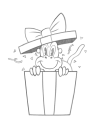Figure Drawing Fundamentals
Gesture
The Bean
Structure
Landmarks
Robo Bean
Mannequinization
Balance
Exaggeration
Proportions
Measuring
Shading
Figure Drawing Demo
Closing Thoughts
Give a gift
Give a gift card for art students to use on anything in the Proko store.
Or gift this course:

About instructor
Founder of Proko, artist and teacher of drawing, painting, and anatomy. I try to make my lessons fun and ultra packed with information.








Shade an Egg
Take an egg out of your fridge and place it on a piece of white paper. Light it with a direct lightsource (desk lamp, flashlight, etc…) Shade the egg using what you learned from this lesson. Identify a clear shadow shape with the core shadow and cast shadow. When you fill in the values, separate the lights and dark and keep that separation and you add the halftones and occlusion shadows. Change the light angle and draw it again!